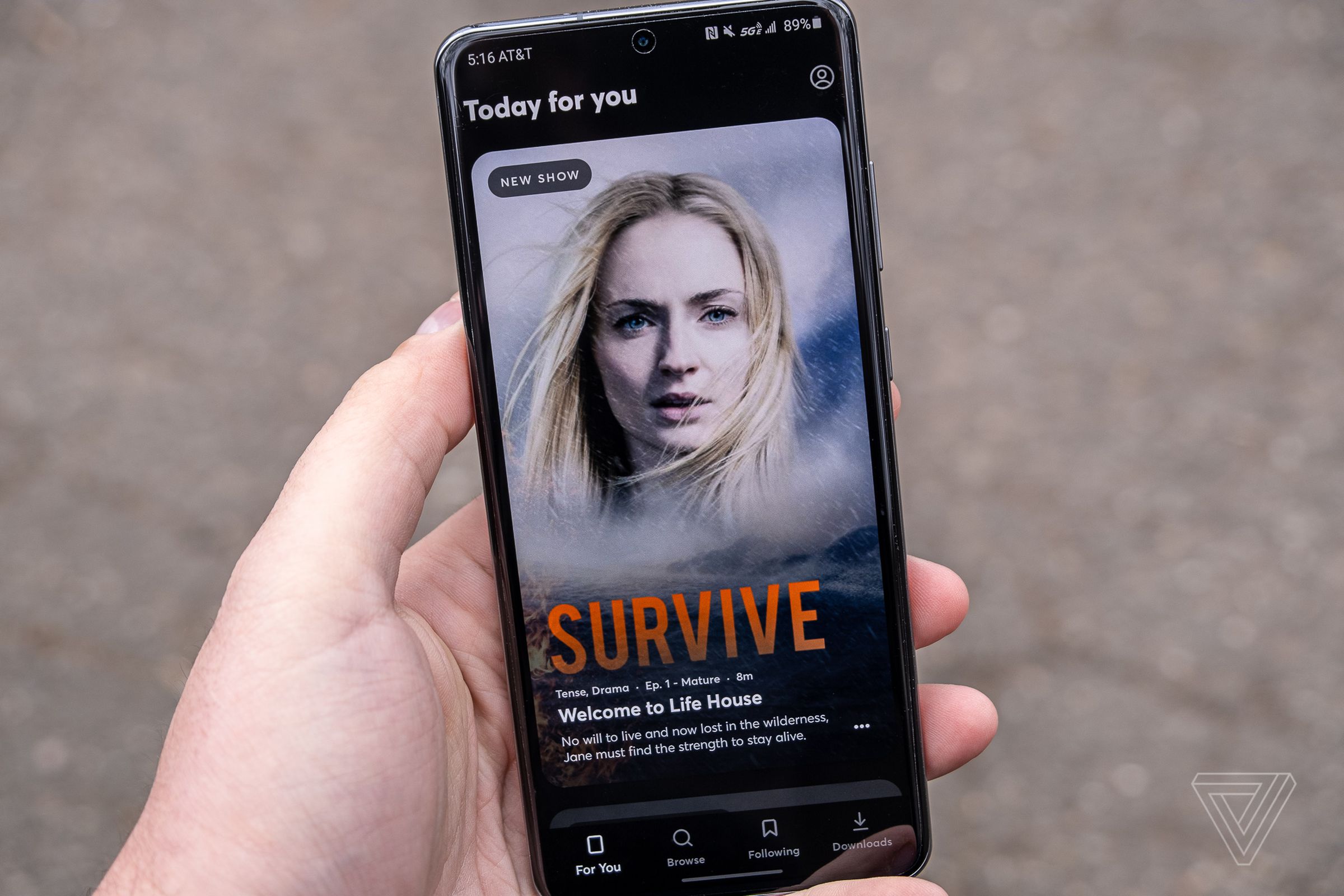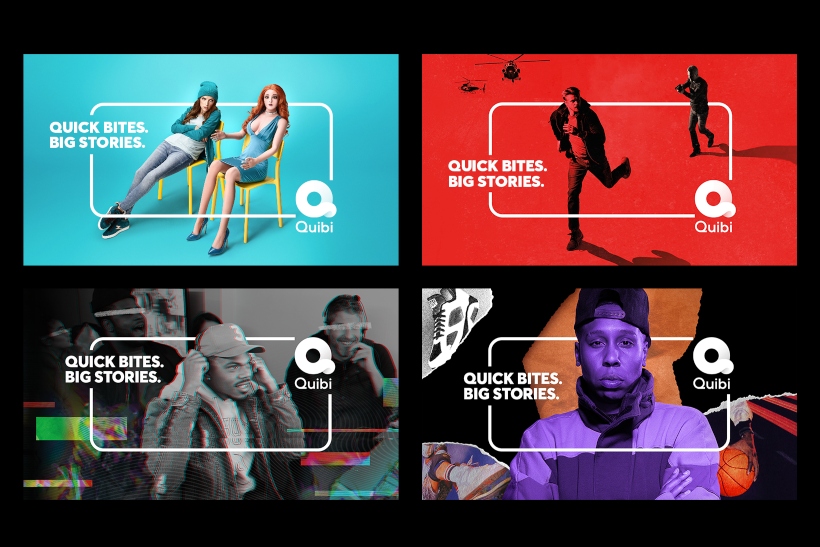In the constantly evolving world of streaming services, few platforms have captured the attention and subsequent disappointment of users as much as Quibi – a service most people haven’t even heard of. With their grand promises to revolutionise the way we consume digital content, Quibi’s spectacular collapse has left many wondering how such a highly anticipated service came crashing down just months after its launch.
In this fast-paced era of technology, streaming services have taken the entertainment world by storm, revolutionising the way we consume video in a shake up bigger than home video in the 1980s. YouTube, was arguably the first popular video-streaming site, jumping online in 2005, and Netflix debuted the first popular video-on-demand service in 2007 – I dont need to go in to it, we all know what happened next. Our Tv and media landscape has never, and will never been the same.
But lets go back to 2020 with giants like Netflix, Amazon Prime, Hulu, and the new Disney+, it seemed impossible for any new player to make a dent in this competitive market, even as the pandemic loomed and kept everyone locked inside, the stage was firmly set and the key players entrenched. However, in April 2020, a promising new addition emerged: Quibi. Positioned as a “quick bites” streaming platform, Quibi aimed to revolutionise the way we consume content.
Founded by former Disney executive Jeffrey Katzenberg and tech entrepreneur Meg Whitman, Quibi sold a unique concept that focused on delivering bite-sized episodes of less than 10 minutes specifically and exclusively designed for mobile viewing. The platform aimed to cater to busy individuals who craved high-quality content in chunks of no more than ten minutes, ideal for busy lunch breaks, commutes and office time wasting. Quibi set itself apart from traditional streaming platforms by focusing exclusively on providing content tailored for mobile devices with an option to watch all the content in standard landscape or in vertical formats – re introducing the pan and scan method of cropping content last seen in the late 20th century. Short episodic content, was designed to accommodate busy, on-the-go lifestyles, where users could enjoy their favorite shows during brief moments of downtime. With its grand aim to be “the next generation of storytelling “ bolstered by a star-studded lineup of celebrities, including Chrissy Teigen, Liam Hemsworth, and Jennifer Lopez, Quibi built considerable hype before its launch.

While Quibi undoubtedly possessed an innovative approach and boasted a well-curated content library, it ultimately failed to captivate the audience it targeted, focusing on the daytime audience of students and young working people. Multiple factors contributed to this unfortunate outcome, and we can never truly know which one tipped the scales for Quibi, in truth it was probably a multitude of poor choices and poor timing.
Its grand debut coincided with the onset of the COVID-19 pandemic, as we were all stuck in our homes with an overwhelming array of content options already at our fingertips. A platform with an emphasis on mobile consumption and vertical viewing, specifically targeting commuters and people on the go, became redundant. Combined with the lack of web or TV app really damaged the reach at a point in time when consumers didn’t need portability, or something designed to be watched solo.
As a typical subscription-based model, priced between $4.99 to $7.99 per month, the platform failed to justify its cost when compared to the vast libraries of established streaming services offering significantly more content for a similar price. Furthermore, Quibi’s premium-only approach meant it had no free tier to lure in users. It could also be speculated that audiences viewed the vertical format as something that should be free, as up until this point there had been a clear distinction with vertical format platforms being free at point of use (IGTV, SnapChat, TikTok), where paid for content was in a more traditional cinematic format.


Launching with a healthy 50 titles, including movies told in parts (something now so common place that Mean Girls has released on TikTok in this exact same way in 2023 (even if it was just for the day)) , as well as scripted and alternative shows like a reboot of “Punk’d” hosted by Chance the Rapper and “Chrissy’s Court” with Chrissy Teigen. While shows like “#FreeRayshawn” earned Quibi Emmy’s recognition, none became the kind of breakout hit that could’ve helped Quibi survive, and as we know – it only takes one big hit to stabilise a platform. This is in part down to the ‘no social content’ rule widely reported to be in effect across the platform in which Quibi dismissed pitches from influencers with millions of fans/followers on YouTube out of a desire to distance themselves from content that could be found on social media. Similarly, the talent behind Quibi’s content wasn’t the influencers or creators that capture the attention of Gen Z and millennials, but instead the types of megastars Quibi’s target age groups have traditional less interest in.
Quibi’s creators had the assumption that mobile users would be willing to pay for content that was delivered in short “chapters” and could be consumed on the go. However, it turns out that long-form streaming services also have mobile apps and offer viewers the flexibility to pause and watch as much or as little as they have time for. Ultimately, people using mobile devices choose what to watch based on their personal interests, rather than solely considering the length of the content in relation to their current situation.
From the get go there were concerns raised by stakeholders and artists within the entertainment industry regarding Quibi’s approach to promoting (or lack of) its programming through social media. Despite effectively marketing its brand through this platform, Quibi primarily focused on digital ad buys during its early stages, with big budget TV ads during high-profile events including a 30 second Super Bowl spot and the Oscars.
Despite trying during its April 2020 launch to lure in viewers with a 90-day free trial, the streaming hub was unable to find an audience willing to pay for its short-form programming. Quibi initially projected it would have more than 7 million subscribers after its first year, but had under 75,000 paying subscribers by the end of the trial. In real terms less than 10% of people who downloaded Quibi at launch converted into paying subscribers after a 90-day free trial ended, which unsurprisingly caused advertisers and stakeholders to scramble.
It struggled to penetrate the crowded streaming market due to an ill-conceived marketing campaign. Targeted at younger demographics, advertising efforts relied heavily on sponsorships and partnerships, failing to convey a persuasive narrative and generate sufficient word-of-mouth buzz.
However, Quibi eventually recognised the importance of social media in promoting its shows. In July 2020, the company introduced the ability to share content on various social media platforms in response to criticism from users and media outlets, but it was too little to late – denying people the chance to make memes, share content or introduce friends to the content meant organic marketing was slow.

Quibi’s journey from being a much-anticipated streaming service to a cautionary tale is a testament to the ever-evolving nature of the entertainment industry. With an ambitious concept and massive investments, Quibi had all the potential for success. However, a series of missteps, including untimely launch, lack of a free tier, and fierce competition from established platforms, all contributed to its downfall. The story of Quibi serves as a cautionary tale that innovation alone is not enough to guarantee success. Understanding the market, adapting to changing consumer needs, and offering a compelling value proposition are key factors that cannot be taken for granted.
As we are looking towards the future of AI creations (and all the ethical issues that brings) and as we stand on the edge of real AR and VR home use there is no telling what is to come, but I for one will be watching.
